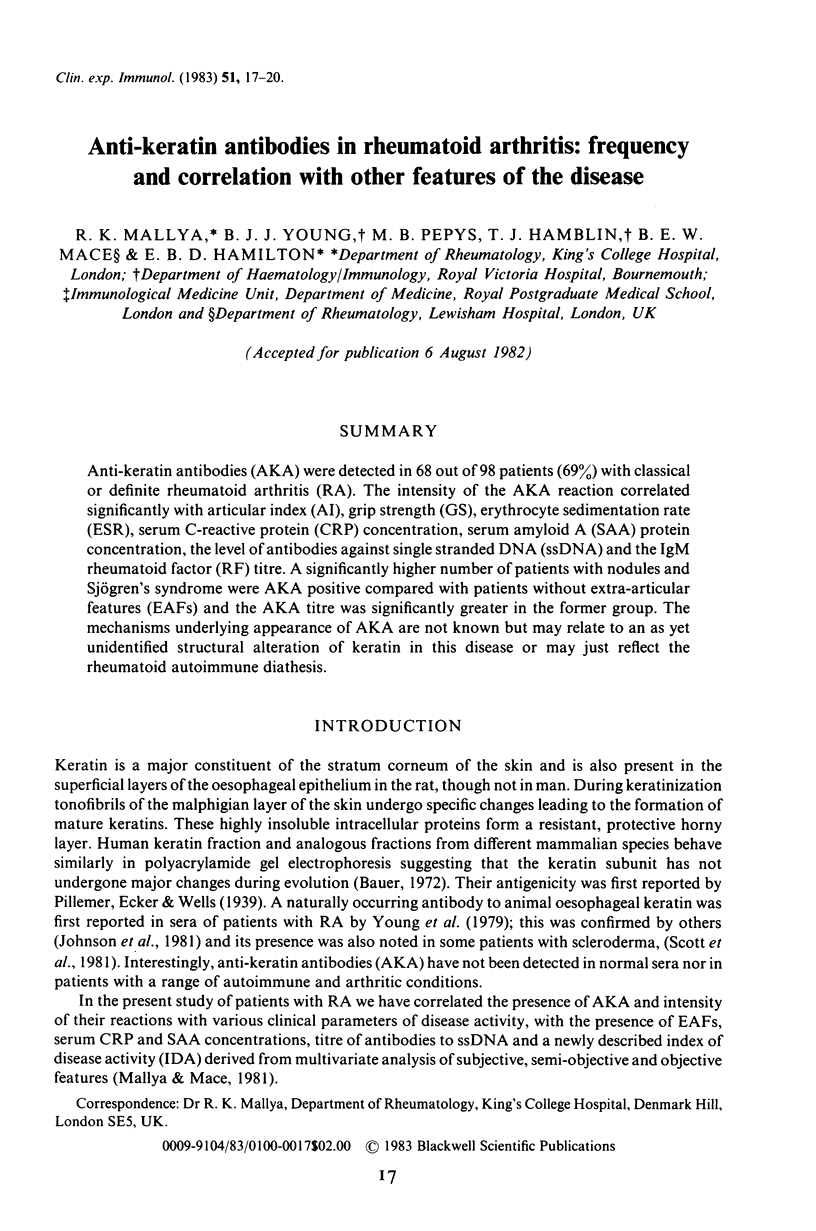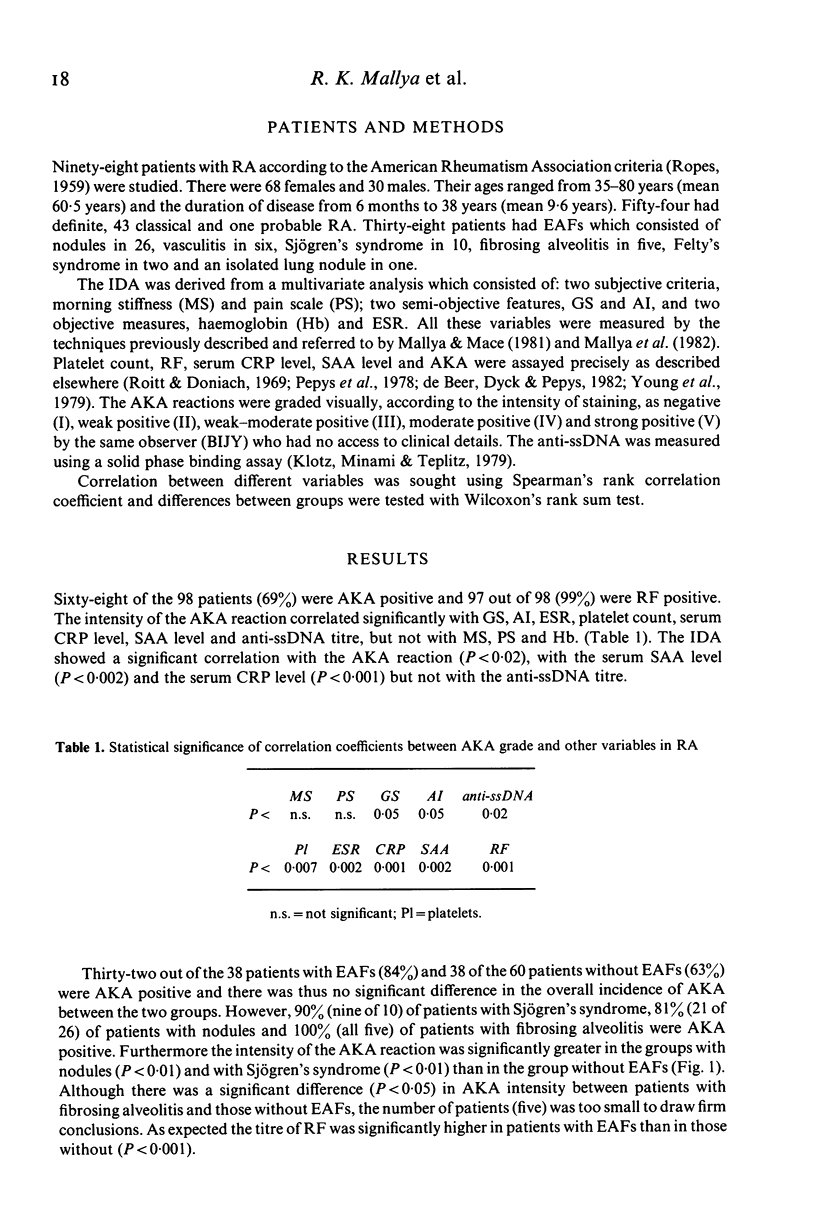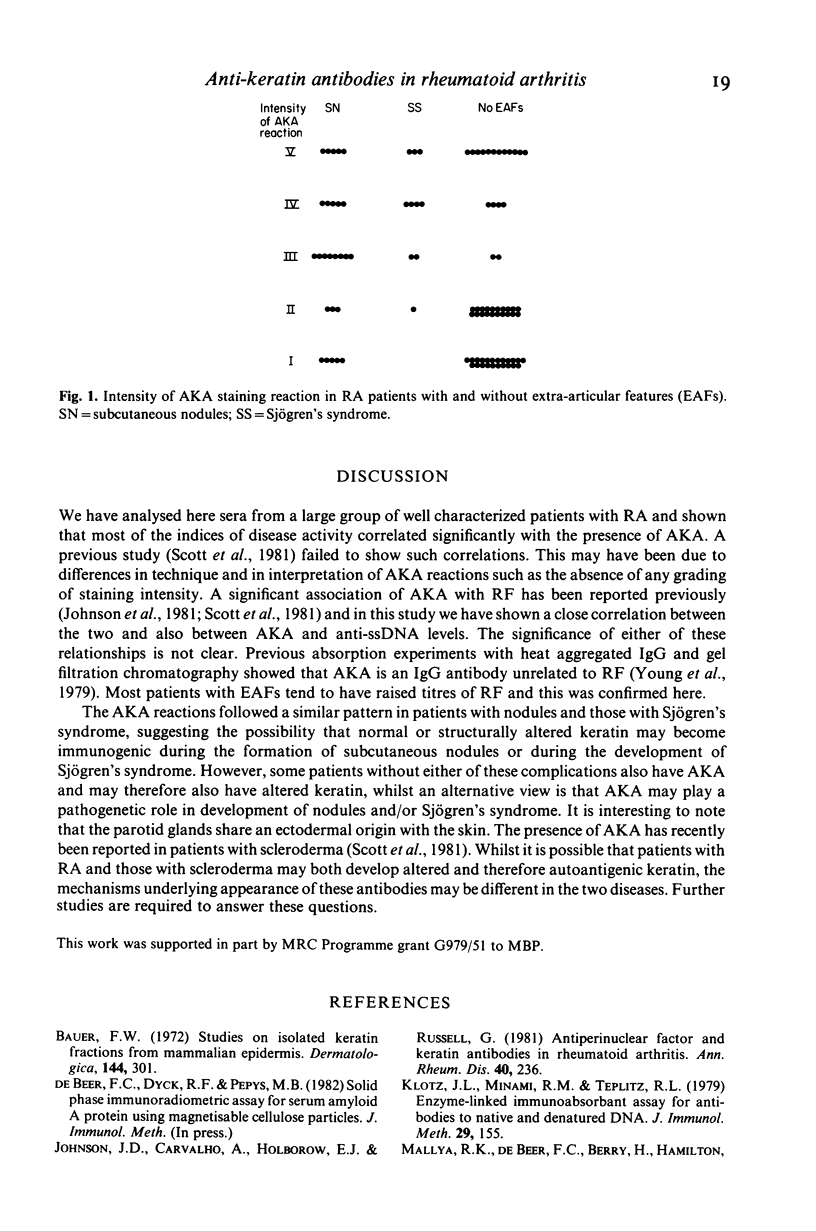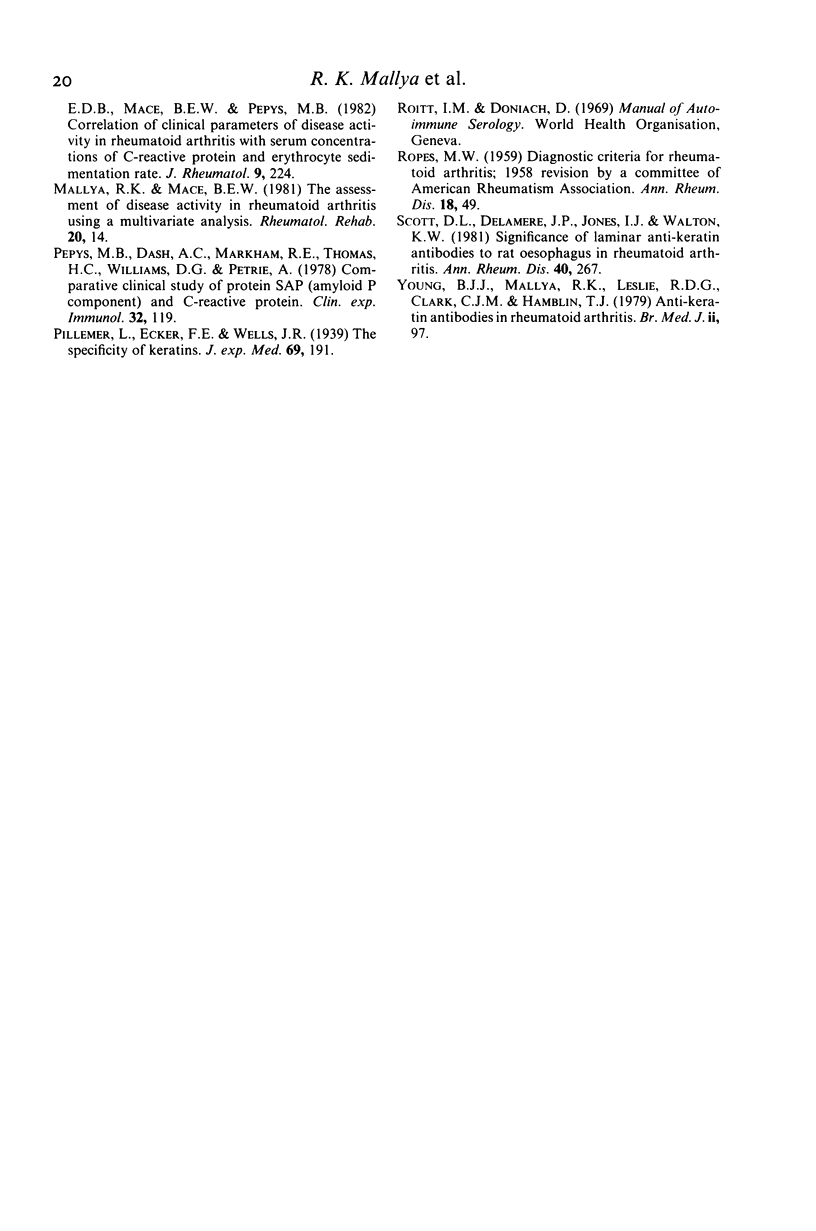Abstract
Anti-keratin antibodies (AKA) were detected in 68 out of 98 patients (69%) with classical or definite rheumatoid arthritis (RA). The intensity of the AKA reaction correlated significantly with articular index (AI), grip strength (GS), erythrocyte sedimentation rate (ESR), serum C-reactive protein (CRP) concentration, serum amyloid A (SAA) protein concentration, the level of antibodies against single stranded DNA (ssDNA) and the IgM rheumatoid factor (RF) titre. A significantly higher number of patients with nodules and Sjögren's syndrome were AKA positive compared with patients without extra-articular features (EAFs) and the AKA titre was significantly greater in the former group. The mechanisms underlying appearance of AKA are not known but may relate to an as yet unidentified structural alteration of keratin in this disease or may just reflect the rheumatoid autoimmune diathesis.
Full text
PDF



Selected References
These references are in PubMed. This may not be the complete list of references from this article.
- Bauer F. W. Studies on isolated keratin fractions from mammalian epidermis. II. Immunological and immuno-electrophoretic comparison of the fractions. Dermatologica. 1972;144(5):301–309. [PubMed] [Google Scholar]
- DIAGNOSTIC criteria for rheumatoid arthritis: 1958 revision by a committee of the American Rheumatism Association. Ann Rheum Dis. 1959 Mar;18(1):49–53. [PMC free article] [PubMed] [Google Scholar]
- Klotz J. L., Minami R. M., Teplitz R. L. An enzyme-linked immunosorbent assay for antibodies to native and denatured DNA. J Immunol Methods. 1979;29(2):155–165. doi: 10.1016/0022-1759(79)90065-6. [DOI] [PubMed] [Google Scholar]
- Mallya R. K., Mace B. E. The assessment of disease activity in rheumatoid arthritis using a multivariate analysis. Rheumatol Rehabil. 1981 Feb 1;20(1):14–17. doi: 10.1093/rheumatology/20.1.14. [DOI] [PubMed] [Google Scholar]
- Mallya R. K., de Beer F. C., Berry H., Hamilton E. D., Mace B. E., Pepys M. B. Correlation of clinical parameters of disease activity in rheumatoid arthritis with serum concentration of C-reactive protein and erythrocyte sedimentation rate. J Rheumatol. 1982 Mar-Apr;9(2):224–228. [PubMed] [Google Scholar]
- Pepys M. B., Dash A. C., Markham R. E., Thomas H. C., Williams B. D., Petrie A. Comparative clinical study of protein SAP (amyloid P component) and C-reactive protein in serum. Clin Exp Immunol. 1978 Apr;32(1):119–124. [PMC free article] [PubMed] [Google Scholar]
- Scott D. L., Delamere J. P., Jones L. J., Walton K. W. Significance of laminar antikeratin antibodies to rat oesophagus in rheumatoid arthritis. Ann Rheum Dis. 1981 Jun;40(3):267–271. doi: 10.1136/ard.40.3.267. [DOI] [PMC free article] [PubMed] [Google Scholar]
- Young B. J., Mallya R. K., Leslie R. D., Clark C. J., Hamblin T. J. Anti-keratin antibodies in rheumatoid arthritis. Br Med J. 1979 Jul 14;2(6182):97–99. doi: 10.1136/bmj.2.6182.97. [DOI] [PMC free article] [PubMed] [Google Scholar]


